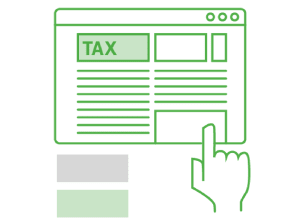From the article you will learn:
- who can benefit from 50% of the tax deductible expenses?
- how to apply 50% of tax deductible expenses in the IT industry?
- what is the definition of royalty payment?
Employees who receive remuneration for obtaining income under an employment relationship are, as a rule, entitled to lump-sum amounts of tax deductible expenses. Persons who receive remuneration on the basis of a contract of mandate or a contract for specific work are entitled to 20% of the tax deductible expenses. However, the Polish Personal Income Tax Act introduces certain exceptions, indicating in some cases the possibility of applying higher tax deductible expenses.
One of such exceptions is the provision allowing the benefit of 50% of the tax deductible expenses from copyright and related rights or from the disposal of these rights by creators and artists.
Who is entitled to 50% of tax deductible expenses?
The right to apply copyright tax deductible expenses is regulated by Art. 22 section 9 (3) of the Personal Income Tax Act. As already indicated, 50% of the tax deductible expenses apply to the use of copyrights by creators and performers from related rights (or their disposal of these rights).
According to the provisions of the Copyright Act, the subject of copyright is any manifestation of creative activity of an individual nature, established in any form, regardless of its value, purpose and method of expression, called a piece of work.
This manifestation of creative activity is to have a specific, external form. We must pay attention to the fact, often overlooked when analysing pieces of work that may be covered by copyright, that a piece of work is not a recipe, an idea or a solution to a problem. However, a creative way of presenting such a solution may be a piece of work that allows for the use of 50% of tax deductible expenses.
A piece of work may be a film, graphic or image, but also source code or an interface – as long as they are creative in nature. This means that programmers can also benefit from the preference allowing the application of copyright costs. And they definitely do it – in practice, there are also software architects, QA specialists, UX specialists and other people related to the IT industry whose activities enable them to settle the tax deductible expenses as in the case of "traditional" creators and artists.
The right to apply 50% of the tax deductible expenses will arise if the programmer transfers the copyright to the pieces of work to another entity.
Article 22 section 9 (3) of the Personal Income Tax Act does not specify the type of contract on the basis of which copyrights should be transferred in order to be able to apply copyright tax deductible expenses. Therefore, these expenses can be used when paying remuneration both under an employment contract, a mandate contract and a contract for specific work.
Learn more about tax advisory services
What conditions must be met to be able to apply 50% tax deductible expenses?
In order for the remuneration paid to an employee to be considered a royalty payment (and, consequently, to apply 50% of the tax deductible expenses), it is necessary:
- to create a piece of work that is the subject of copyright,
- to have evidence confirming the creation of a piece of work that is the subject of copyright,
- to clearly separate the royalty from other remuneration components.
Method of determining the royalty payment: how to calculate the author's tax deductible expenses?
The provisions of the Personal Income Tax Act do not specify how the royalty payment should be determined. Moreover, case law and doctrine have not developed a common position in this regard.
Therefore, the method of determining the amount of the fee is, as a rule, within the scope of the contractual freedom of the parties to the contract.
Two methods are usually used to determine an employee's royalty payment:
- a method of determining a fixed percentage of remuneration, which will constitute a fee for the transfer of copyrights to pieces of work,
- a method of keeping records of hours spent on performing creative works, on the basis of which a fee is calculated for the transfer of copyrights to pieces of work.
The choice of method depends on the individual preferences of the parties to the contract.
Applying 50% of tax deductible expenses to the total remuneration
As a rule, the condition for applying author's tax deductible expenses is to separate the royalty payment from other components of remuneration. However, in the general interpretation of 15 September 2020, No. DD3.8201.1.2018, the Minister of Finance indicated certain exceptions to this rule, thus designating categories of entities whose remuneration may be fully covered by 50% of the tax deductible expenses. These are:
- academic teachers,
- research workers,
- employees of the International Institute of Molecular and Cell Biology in Warsaw, and
- employees of research departments.
Only in relation to the above groups of people it is possible to apply 50% of the tax deductible expenses to the total remuneration paid.
How does the minimum wage affect royalty payment?
Pursuant to the Minimum Wage Act, the remuneration of a full-time employee cannot be lower than the minimum wage determined in accordance with this Act.
In order to calculate the amount of remuneration, the employee's remuneration components and other benefits that result from the employment relationship and are included in personal remuneration according to the statistical principles specified by the Central Statistical Office are taken into account.
The Central Statistical Office does not classify royalty payments as personal remuneration, therefore they are not included in the calculation of the minimum wage.
The consequence of this position is that the royalty payment is not part of the minimum wage. This, in turn, means that – in the case of 50% of the tax deductible expenses – the part of the remuneration that is not a royalty payment cannot be lower than the minimum remuneration for work.
What is the annual limit for 50% of tax deductible expenses?
Please remember that 50% of the employee's tax deductible expenses are subject to an amount limit. In one tax year, the tax deductible expenses from the use of copyrights and performers from related rights (or their disposal of these rights) may not exceed the amount constituting the upper limit of the first treshold of the tax scale referred to in Art. 27 section 1 of the PIT Act – i.e. the amount of PLN 120,000.
Moreover, the amount of 50% of the tax deductible expenses is also limited in the case of using the exemption specified in Art. 21 section 148 of the Personal Income Tax Act (so-called exemption for young people), Art. 21 section 152 (a) of the Personal Income Tax Act (so-called return exemption), Art. 21 section 1.153 (a) of the Personal Income Tax Act (the so-called 4 plus exemption) and Art. 21 section 1.154 of the Personal Income Tax Act (so-called exemption for working seniors).
In these cases, the amount of PLN 85,528 is the amount indicated in Art. 22 section 1-3 of the PIT Act, the upper limit of the total tax deductible expenses, up to which the above-mentioned expenses related to royalty payments are exempt from tax.
Consequently, a person taking advantage of any of the above exemptions will be able to apply 50% of the tax deductible expenses to the surplus of income exceeding PLN 85,528, but subject to the maximum limit of PLN 120,000.
What are the benefits of using 50% of tax deductible expenses?
Applying 50% of tax deductible expenses allows employers to reduce the amount of income tax advances and, consequently, increase the employee's net salary. So this is a solution worth using. Unfortunately, due to the tax benefits resulting from the use of this preference (and the increasing popularity of this form of settlement), payers have recently been faced with an increased number of controls undertaken by tax authorities regarding the application of 50% of tax deductible expenses.
Therefore, before deciding to implement proprietary tax deductible expenses, we recommend consulting a tax advisor with experience in tax exemptions who will be able to tailor appropriate solutions for both the organization and its employees.





